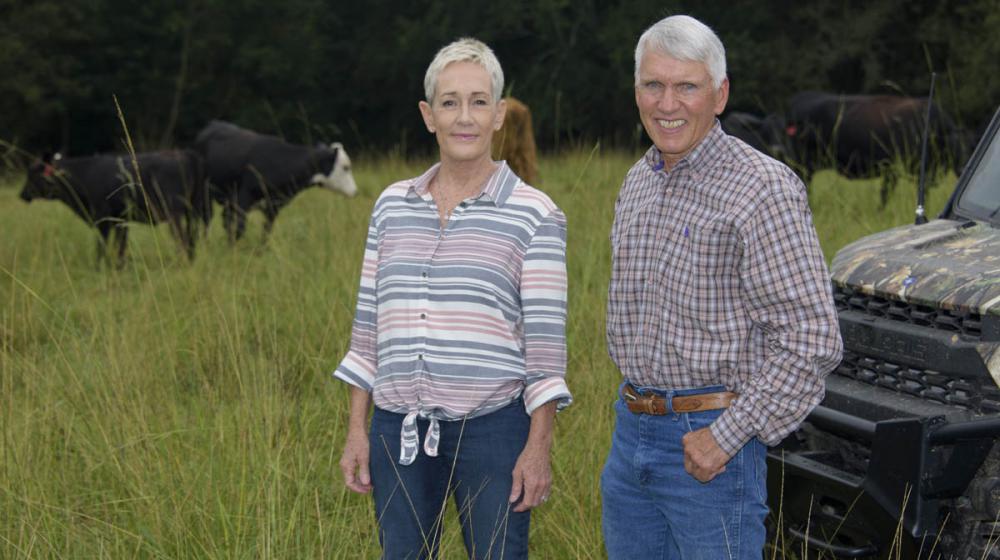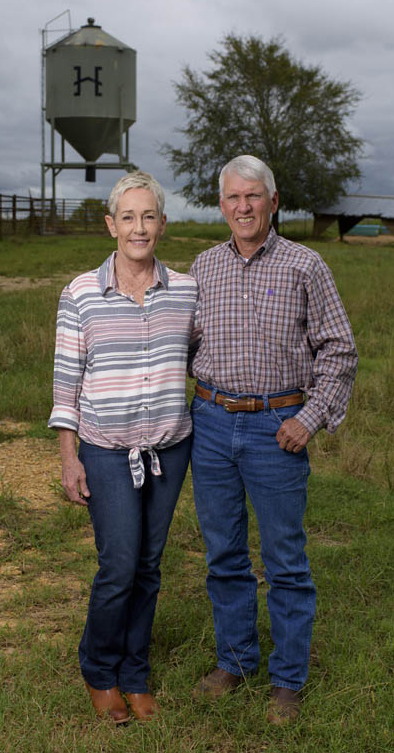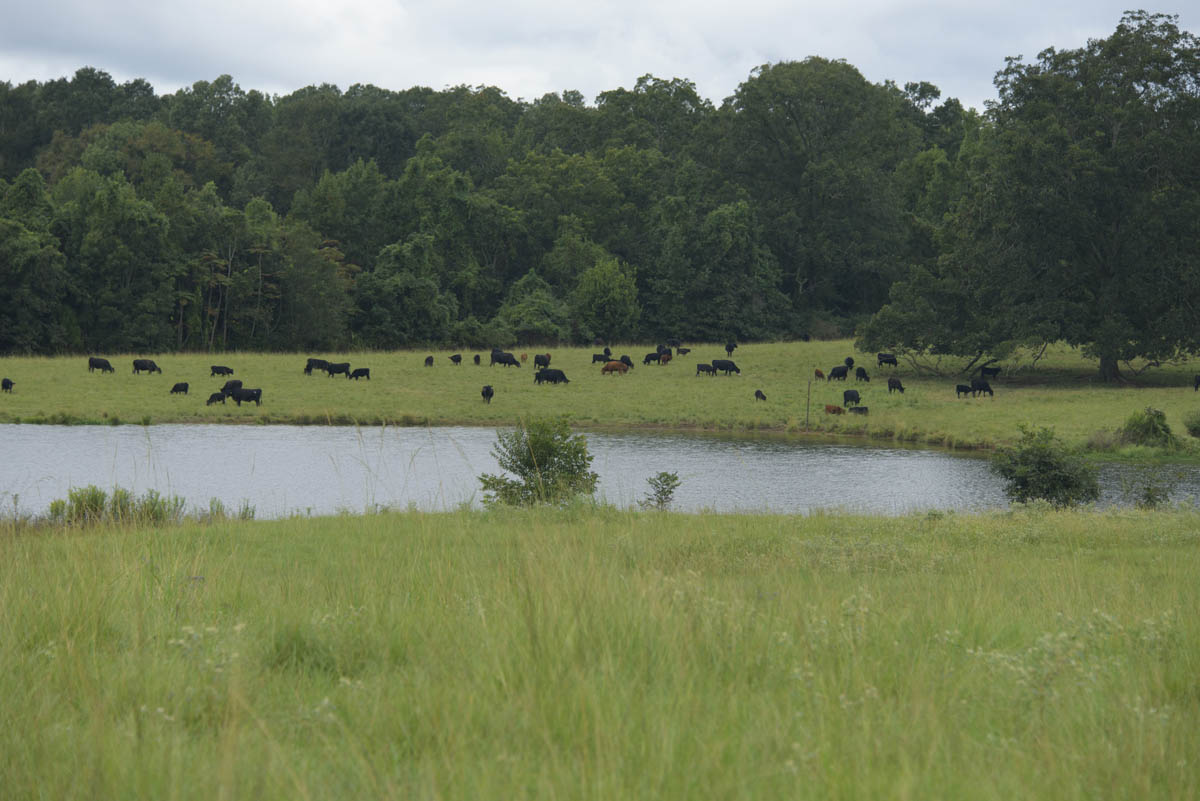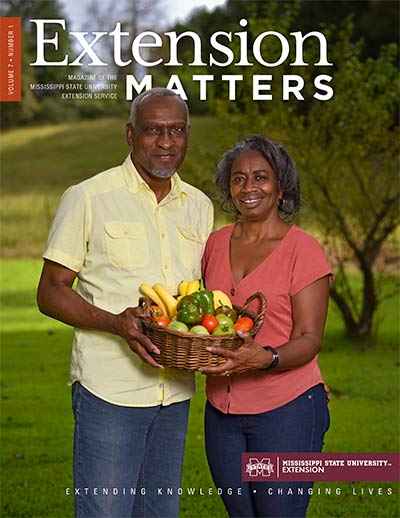New Way to Farm

The Hurts are invested in making the most of their land and cattle.
Couple uses regenerative agriculture principles to raise cattle
Story by Leah Barbour • Photos by Kevin Hudson

in Wilkinson County
It takes a different mindset, a different approach, and different tactics. But regenerative agriculture can work, and it’s working really well at Hunt Hill Cattle Company.
Cooper and Katie Hurst, originally from Baton Rouge, Louisiana, started buying cattle for southwest Mississippi pastures in Wilkinson County back in 1995.
Starting with 20 cows and 650 acres, their cow-calf operation has increased in head and acres. They moved to Woodville full time in 2004.
“We have enough to keep us busy,” Cooper laughs. “As we rotated the cattle, the more and more grass we grew. We got into high-density grazing about 10 or 11 years ago, where we graze cattle in a smaller area for a shorter amount of time but with a longer rest and recovery.
“Amazing things began to happen with the grazing—for the cattle’s nutritional health and for the soil.”
Their operation truly is a business, he adds, and profit considerations kept him and his wife continuing to learn more about how to produce the best cattle with the least environmental impact. They attended Mississippi State University Extension Service cattle workshops to improve their knowledge on a range of cattle-related topics, especially cattle stocking and forages.
About 8 years ago, Katie continues, the couple started learning about regenerative agriculture.
“It’s a mindset change, and we didn’t have to go out and spend money on it,” she says. “We learned about the soil health principles, and it’s improved the forage, the soil, the bug life, the bird life, all the interconnected wildlife habitat—and reduced input costs.”
The Hursts plant a wide variety of cover crops, but they don’t till, spray, or use commercial fertilizer, says Lionel Brown, Extension agent in Wilkinson County. The Hursts are farming the way they want to, and it’s working well for them.
— Katie Hurst
“Mr. Cooper is so scientific with his approach; it’s neat knowing about the soil and how to keep it healthy, not just with cover crops but with a whole lot of things,” he says. “If you’re going to grow cows, you’re going to be a grass-grower first. That’s the Hursts’ deal with regenerative farming: they are stewards of the land, maximizing what they have.”
Even when clients get soil tests and follow Extension’s recommendations to select the best forages, the process of maximizing the use of the land does take time. Being a successful producer requires knowledge, and the Hursts have learned quite a lot, Brown emphasizes.
“Mr. Cooper is a mentor, and I’ve learned a lot from him—he’ll tell you what he did and how it works for him,” Brown explains. “He just tells his story of trial and error and what works.”

Whether they’re controlling weeds to get more good grass for their cattle, planting forages that maximize the use of the land, or working to enhance their soil, the Hursts are invested in making the most of their land and cattle, while preserving the beautiful Wilkinson County acres for years to come.
“They’re trying to reduce the carbon footprint right here in this county,” Brown says. “There are so many different types of operations, but this works for them. It’s nice to see this diverse approach to the cattle business.”


